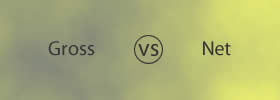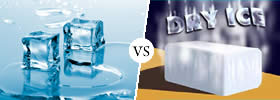Difference between Gliding and Sliding
Key difference: Gliding is something that is done without any effort. It does not require propulsion or any engine. Think of a paper airplane, it does not have any source of power. When we throw it in the air, it slowly crosses the length of the room and then lands or rather falls to the floor. This is gliding. To glide is to use the air currents and gravity to move over short distances. Sliding, on the other hand, is a movement done on ground. Sliding itself denotes movement from one place to another.
 Gliding and sliding are two different words that often denote something that is in movement. The main difference between the two is that while gliding can refer to gliding in the air, or on water, or even on land, in some instances, sliding will most probably refer to on land.
Gliding and sliding are two different words that often denote something that is in movement. The main difference between the two is that while gliding can refer to gliding in the air, or on water, or even on land, in some instances, sliding will most probably refer to on land.
According to Dictionary.com, the word ‘gliding’ is defined as:
- To move smoothly and continuously along, as if without effort or resistance, as a flying bird, a boat, or a skater.
- To pass by gradual or unobservable change (often followed by along, away, by, etc.).
- To move quietly or stealthily or without being noticed (usually followed by in, out, along, etc.).
- To move in the air, especially at an easy angle downward, with less engine power than for level flight, solely by the action of air currents and gravity, or by momentum already acquired.
- To fly in a glider.
While, ‘sliding’ is defined as:
- Rising or falling, increasing or decreasing, according to a standard or to a set of conditions.
- Operated, adjusted, or moved by sliding: a sliding door.
- To move along in continuous contact with a smooth or slippery surface: to slide down a snow-covered hill.
- To slip or skid.
- To glide or pass smoothly.
- To slip easily, quietly, or unobtrusively on or as if on a track, channel, or guide rail (usually followed by in, out, away, etc.).
- To pass or fall gradually into a specified state, character, practice, etc.
- To decline or decrease: Interest rates are beginning to slide.
- To cause to slide, slip, or coast, as over a surface or with a smooth, gliding motion.
- To hand, pass along, or slip (something) easily or quietly (usually followed by in, into, etc.): to slide a note into someone's hand.
Gliding is something that is done without any effort. It does not require propulsion or any engine. Think of a paper airplane, it does not have any source of power. When we throw it in the air, it slowly crosses the length of the room and then lands or rather falls to the floor. This is gliding. To glide is to use the air currents and gravity to move over short distances.
While gliding, one does have some control over their movements, however not too much. Once something is launched in the air, it may change direction or manipulate its movement to change its landing point. Let’s take the example of the paper airplane again. Once we launch it, it usually flies straight, however, at times it may land halfway across the room from where we intended. We might have been aiming at the table, but it may land on a chair opposite the table. This is mainly because either the direction of the air changed or the position of the airplane change. In any case, the movement changed the relation of the air currents and the airplane. Hence, the airplane was forced to follow the air current or if it was opposite the air current, then it would have just crashed.
While, almost all birds fly, there are many that glide from one place to another over short distances, usually from one tree to another. They do this by just extending their wings and allowing the air current to carry them. There are also some mammals that glide from one tree to another. A prime example of this is the flying squirrel, wrongly named as it does not fly but glides.

Other than gliding in the air, one can also use the term for other instances, such as, ‘the boat is gliding on the water’, or ‘the skater is just gliding on the ice’.
Sliding, on the other hand, is a movement done on ground. We have all, sometime in our life walked around the house in our socks and went around running and sliding from place to place. Or we have all been to the children’s area in the park, where there are slides for the children to slide down of, and if as adults we want to slide down, there are always the slides at water parks.
Sliding itself denotes movement from one place to another. This may be the movement of a person, of an object or goods. Think of someone passing you a pen by sliding it across the table. Or, during a move, we slide the furniture across the room. Or, in an avalanche, the snow slides down the mountainside.
While, both gliding and sliding denote movement from one place to another. Sliding in restricted to on the ground, whereas gliding is not. Furthermore, whether a person is sliding or gliding across a floor, or if an ice skater is gliding or sliding across the ice, it can be said that gliding is smoother or more graceful than sliding. Hence, it can be said that the ice skater glides across the ice, while a person slides on the floor worrying, if he is going to crash in the wall ahead.
Image Courtesy: journeymart.com, cookiemadness.net









Add new comment